Also by James A. Warren
American Spartans: The U.S. Marines:
A Combat History from Iwo Jima to Iraq
Portrait of a Tragedy:
America and the Vietnam War
__________________________________________
THE LIONS OF IWO JIMA
__________________________________________
THE LIONS
OF IWO JIMA
_________________________________

Major General
FRED HAYNES (USMC-ret)
and JAMES A. WARREN
A John Macrae Book
Henry Holt and Company New York

Henry Holt and Company, LLC
Publishers since 1866
175 Fifth Avenue
New York, New York 10010
www.henryholt.com
Henry Holt and  are registered trademarks
are registered trademarks
of Henry Holt and Company, LLC.
Copyright 2008 by Major General Fred Haynes (USMC-ret)
and James A. Warren
All rights reserved.
Distributed in Canada by H. B. Fenn and Company Ltd.
CT 28 logo courtesy of the U.S. Naval Institute
Library of Congress Cataloging-in-Publication Data
Haynes, Fred.
The lions of Iwo Jima / Fred Haynes and James A. Warren. 1st ed.
p. cm.
A John Macrae Book.
Includes bibliographical references and index.
ISBN-13: 978-0-8050-8325-5
ISBN-10: 0-8050-8325-1
1. Iwo Jima, Battle of, Japan, 1945Personal narratives, American. 2. United States. Marine Corps. Marines, 28th. 3. Haynes, Fred. I. Warren, James A. II. Title.
D767.99.I9H38 2008
940.54'2528dc22 | 2007042245 |
Henry Holt books are available for special promotions
and premiums. For details contact: Director, Special Markets.
First Edition 2008
Designed by Victoria Hartman
Maps by James Sinclair
Printed in the United States of America
1 3 5 7 9 10 8 6 4 2
The entrance to the War Memorial Chapel in the National Cathedral in Washington is guarded by two oak railings bearing the following inscription: In remembrance of more than 600 members of the 28th Marines (Reinforced) fallen during the assault on Mount Suribachi and the seizure of Iwo Jima, 1945. 20th Anniversary, 19 February 1965. To them, and to all the other gallant warriors who fell on Iwo Jima, we humbly dedicate this book.

__________________
CONTENTS
__________________
7. Breaking Through the Main Belt:
The Battle for Hill 362A and Nishi Ridge
Appendix 2: Combat Team 28 Survivors:
What They Did After the War
__________________________________________
THE LIONS OF IWO JIMA
__________________________________________
______________
PREFACE
______________
M arch 8, 2006. Two men stand just above a long crescent beach on a small volcanic island 650 miles south of Tokyo. It is about seventy degrees Fahrenheit, a beautiful day to explore hallowed ground. A seven-knot wind blows out of the south. The surf gently breaks on Green Beach, Iwo Jima, where, sixty-one years earlier, the forty-five hundred Marines of Combat Team 28 landed. Their mission: to seize a 554-foot mountainMount Suribachithat dominated the full length of the beach and then to join with seven other combat teams to wrest the entire island from its twenty-two thousand defenders. Iwo Jima in February 1945 was the most densely fortified piece of real estate on earth.
The sound of the surf is broken only by the occasional plaintive cry of a seabird. The younger man wears a Marine-issue bush hat and carries a small tape recorder. The older one, slightly stooped, holds a cane in one hand and gesticulates toward the shoreline below. The two men gaze from north to south along the beach.
To the north, a natural quarry looms over the beach. In the center, there is nothing but the terraced beach of black sand. To the south, rising up like the head of some primordial sea creature, is the mountain. Dusty green foliage obscures cave entrances at the mountains base. Even from a distance of four hundred yards, the craters of countless large-caliber projectiles are visible on the mountains face.
The older man is a retired major general in the Marines named Fred Haynes, this books senior author. He was one of a small number of men in Regimental Combat Team 28 (CT 28) to survive the entire battle without a single wound, and one of a handful of regimental staff officers responsible for planning the assault on Mount Suribachi. He speaks to the man in the bush hat, his coauthor, James A. Warren, a military historian who has written, among other books, a history of the Marines. Fred begins:
Id recently received my regular commission as a Marine, and had worked harder in preparing for this operation than for anything I had done before in my twenty-four years. I had been in the Corps for two years but had never seen combat. I felt something similar to how Id felt back home in Plano, Texas, just before a big high school football game. Its difficult to describe, really. My brother, Doc, used to call it feeling heavy in the pants. It was an odd mixture of anticipation and excitement, mixed with fear of what I might run up against and some apprehension as to how Id respond under what was sure to be heavy fire. Of course, wed used live fire in countless training exercises. But that was meant to reproduce the sights and sounds of combat and instill in us a measure of the seriousness of our job. It wasnt meant to kill peopleunlike the fire we were about to receive on the beach at Iwo Jima.
The first unpleasant surprise was the black, volcanic sand. Your feet sank deep into it with each step, and it was all but impossible to gain traction. Enemy fire at that point was heating upthe big stuff was joining the chorus of mortar and small-arms fire wed been taking since the first amphibious tractors came ashore at 0900. It was bedlam in every direction, real pandemonium front, rear, and on both flanks.
I flopped down on the second of the beachs three terraces next to a warrant officer named Joe Bush, who commanded our rocket section.Joe and I started to dig in right there, in part because the fire was increasing and in part because we needed to gain our bearings before moving forwardsomething we knew we had to do, and fast. I didnt know where our command post (CP) would be, as I could find neither Colonel Liversedge nor Lieutenant Colonel Williams. We needed one of them to set up the CP to run the fight.
Anyway, Joe and I were there not more than a minute or two when a few rounds from a Japanese machine gun went stitch-stitch-stitch, about a foot and a half in front of us. My first thought was, Isnt this strange... theyre shooting at us. But this wasnt exactly truethey were just firing in every direction, and these particular rounds, well, they came pretty close to severing our heads. I thought of Kiplings old ballad, Gunga Din:
It was Din! Din! Din!
With bullets kickin dust-spots on the green.
I also remember thinking that maybe Id made the wrong career move. Id been active in the church around that time and had thought about joining the priesthood. I soon had other causes for concern. Colonel Williams had suggested I get a couple of extra sandwiches from the ships galley the previous night, as we werent likely to get anything decent by way of chow on the first day ashore. So I did just that, but the sandwiches were lost somewhere on the beach, probably not far from where those machine-gun rounds landed.


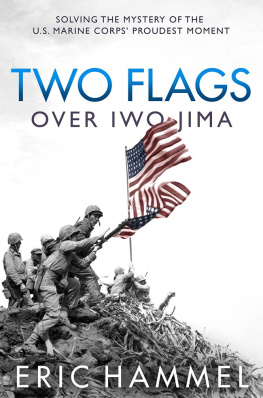
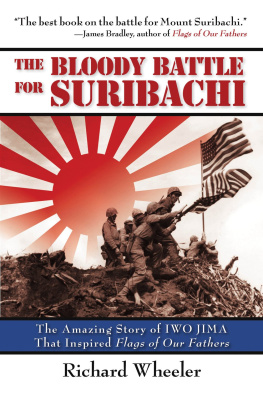


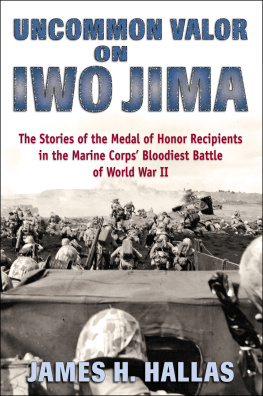
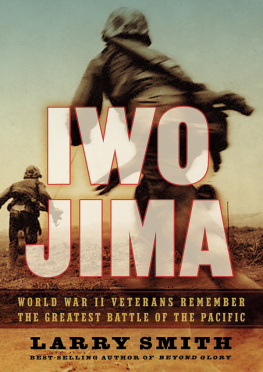
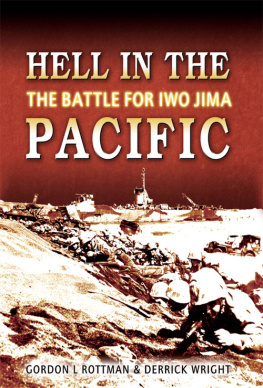

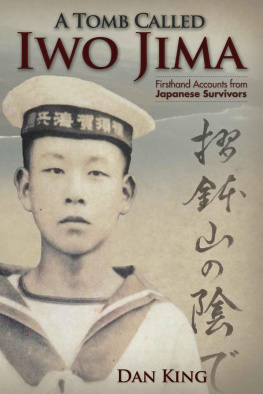

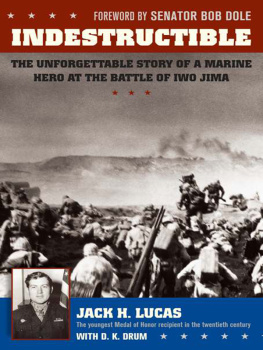



 are registered trademarks
are registered trademarks